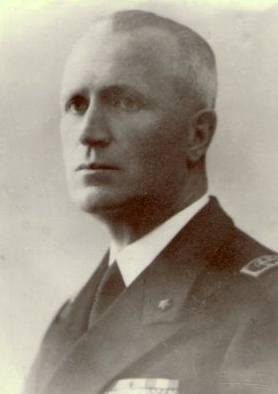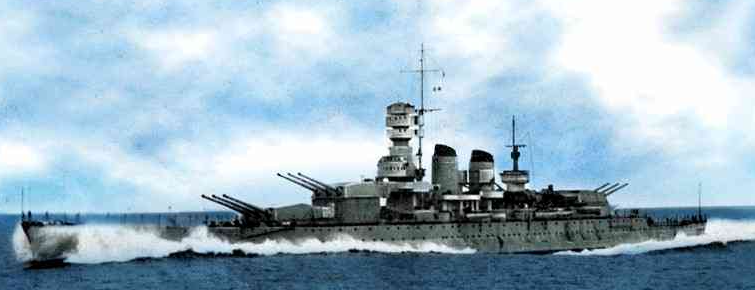On September 10th, 1941 the Germans allies explicitly requested a naval bombardment of the British stronghold of Tobruk at the time surrounded by the Italo-German army of General Rommel. The operation called for a naval bombardment in coordination with a land offensive against the base, real thorn in the flank of the 5th Italian Army and the Afrika Korps. The targets of the mission would have been the coastal defenses, and the area of the bay used by the British to land reinforcements coming from Egypt.
The Regia Marina, mostly basing her comments on experience acquired in Spain and during the occupation of Greece, was very skeptical of the effectiveness of naval bombardments. This kind of action was believed uneconomical compared to aerial bombardment and of low accuracy. Supermarina noted: “the bombardment will be necessarily of brief duration, about half an hour, and due to the distance to be covered to reach Tobruk departing from bases in Italy, it will be difficult to synchronize it with land-based operations.” Therefore, the operation was thought to be mostly demonstrative and to benefit morale and obtain some political gain, but of minimal military value.

Admiral Iachino
The operational plan, created by Adm. Angelo Iachino himself, did not call for the utilization of battleships. The naval force tasked with the mission would have included the heavy cruisers Trento, Trieste and Bolzano (3rd Division), with the escort of a squadron of destroyer and two modern torpedo boats to provide, during the bombardment, for mine sweeping operations just ahead of the cruisers.
One of the required elements for the mission was surprise, and therefore it was decided to take an approach route divided into two segments, each to be covered during the night. Leaving Messina (Sicily) two days earlier and with at least 72 hours notice, the units would have reached Navarrino the following morning. From here, immediately after dark, the 3rd Division would have reached Tobruk around 10 AM. Iachino decided not to reach Tobruk around daybreak to avoid encountering superior enemy forces. In the final plan, extensive aerial reconnaissance was to be carried out by German aircraft based in Crete and starting at sunrise of action day. The commander at sea, based on the circumstances, would have established the return route.
The actual bombardment would have been executed by a destroyer at a distance of 800 meters (keeping at a minimum depth of 100 meters), while the cruisers would have sailed further out at about 3000 meters utilizing their airplanes to secure accurate range finding. In the final draft, it was also thought of utilizing land-based airplanes with a naval observer aboard so to spare the Ro43 installed aboard the cruisers in case of engagement with the enemy.
Much more ambitious was a different plan, referred to as “Operation #2”. This plan called for the utilization of two fast battleships, the Littorio and Vittorio Veneto, and the 3rd Cruiser Division for an action off Tobruk with the goal of impeding the replenishing of the stronghold during the land offensive. This ambitious plan was nevertheless put aside almost immediately due to the impossibility of keeping the enemy unaware of the redeployment of the major forces of the Regia Marina. As a matter of fact, the two battleships were constantly kept under the eye of British aerial reconnaissance. Furthermore, the elevated consumption of oil fuel was kept under consideration.
Aerial cooperation called for the mobilization of all Italian bombers and torpedo bombers based in North Africa and in the Aegean sector, and the German planes based in Crete. These airplanes would have been used to attack enemy naval formations, while fighters from the Regia Aeronautica’s bases in Cirenaica would have provided for a protective umbrella of over 100 aircraft. The Regia Aeronautica’s inability to provide for such a large involvement caused a postponement of the original date of mid November. Eventually, due to the successes of the land-based forces, Operation Toro was postponed indefinitely
